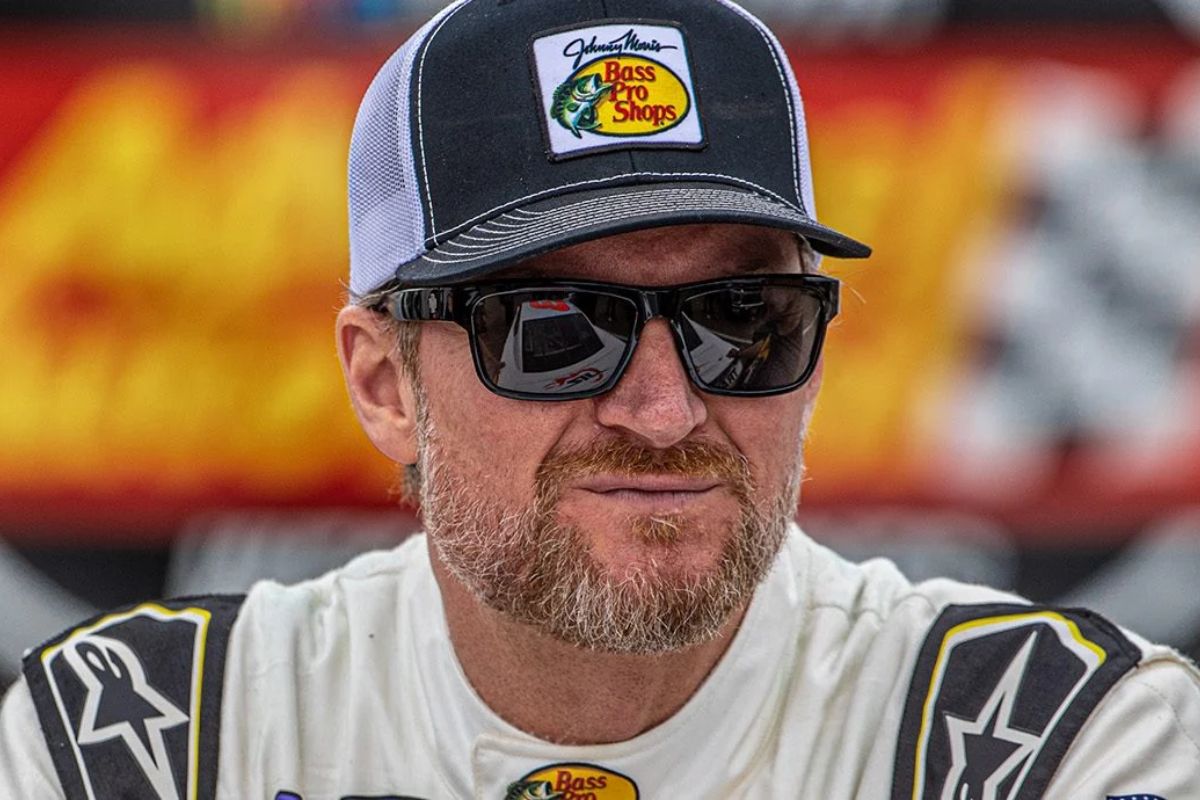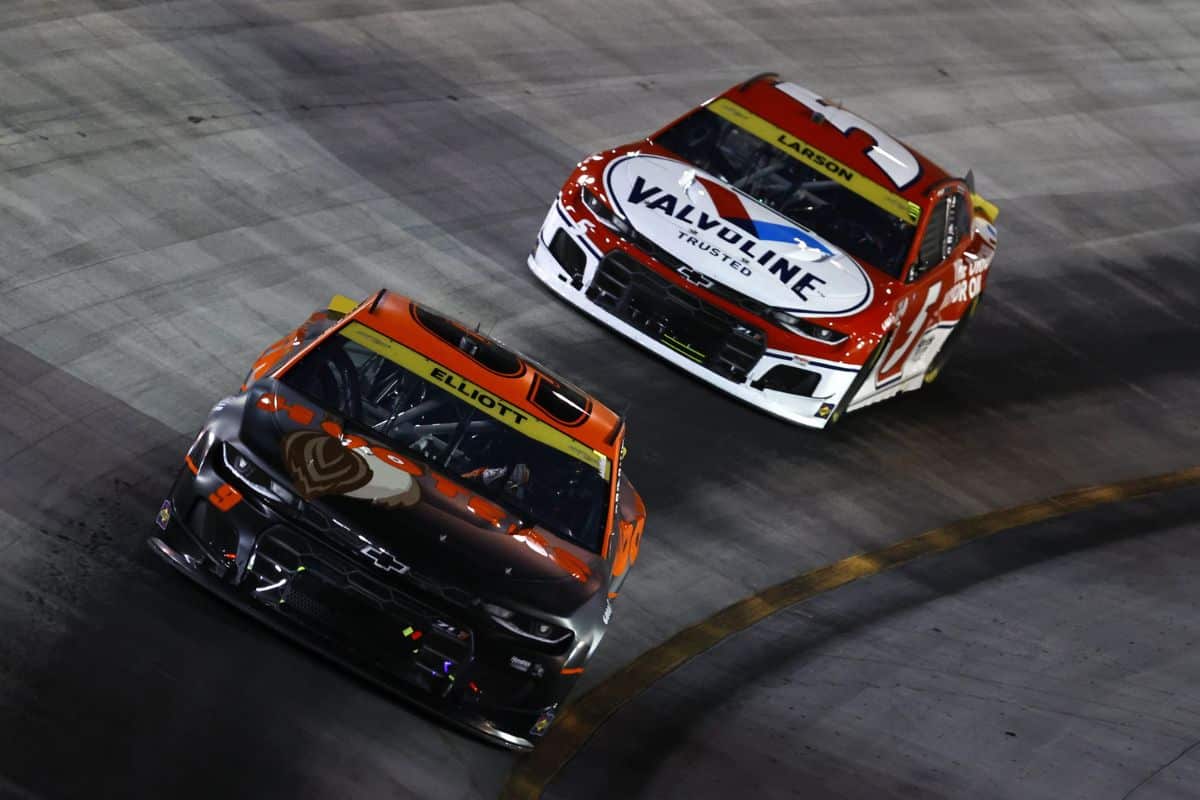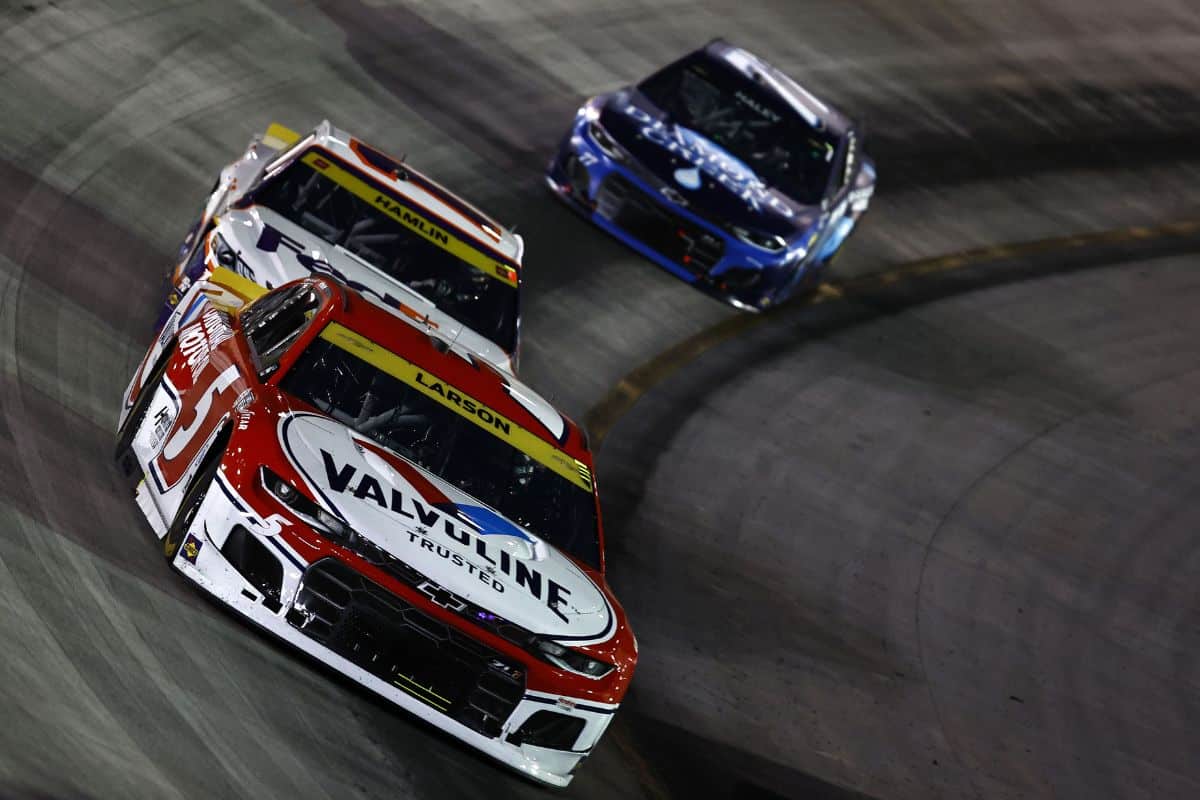NASCAR’s Naughty Era Revealed: The ‘Naughty’ Era of NASCAR, vividly showed by the unforgettable 2002 Bristol Night Race, stands as a validation of the sport’s unfiltered intensity and competitive spirit. This period was marked by notorious incidents, such as Jeff Gordon’s audacious bump-and-run maneuver on Rusty Wallace, which ignited both fervent fan debates and on-track confrontations. The era’s unique charm was further underscored by comical graphics like ‘Ambulance Abuse’ and ‘Finger Pointing,’ covers the raw, often humorous emotions that defined this time. As we examine these moments, it becomes clear how they shaped NASCAR’s legacy.
Key Highlights
- The 2002 Bristol Night Race exemplified NASCAR’s raw emotions with Jeff Gordon’s bump-and-run and rivalries like Robby Gordon versus Jimmie Johnson.
- Humorous graphics, such as ‘Finger Pointing’ and ‘Ambulance Abuse,’ highlighted the theatrical side of NASCAR, sparking mixed fan reactions.
- The race showcased intense competitiveness and unfiltered passion, reflecting the ‘naughty’ era of NASCAR.
- Volatile incidents, including Dale Earnhardt Jr. colliding with Ward Burton, typified the unpredictable nature of the sport during this period.
- The ‘naughty’ era blended fierce racing with unexpected humor, leaving a lasting legacy in NASCAR history.
Legendary Battle Between Gordon and Wallace
The 2002 Bristol Night Race is etched in NASCAR history as a showcase of the intense rivalry and competitive spirit between Jeff Gordon and Rusty Wallace. Held at the iconic 0.533-mile short track, the race delivered one of the most memorable duels in NASCAR’s storied past. This event was not only significant because of the fierce competition but also due to the high stakes involved for both drivers.
Jeff Gordon, the driver of the No. 24 car, was keen to break his 31-race winless streak following his championship victory in 2001. On the other hand, Rusty Wallace, piloting the No. 2 car, was just as determined to end his 49-race drought.

As the race progressed, the tension between Gordon and Wallace became palpable, particularly in the final laps. With both drivers vying desperately for the win, the atmosphere was electric. The defining moment came when Gordon, leveraging the lap traffic, executed a classic bump-and-run maneuver. He nudged Wallace’s rear bumper, causing just enough disruption to seize the lead. This tactical move, emblematic of short-track racing, demonstrated Gordon’s strategic acumen and audacity.
The bump-and-run at Bristol became a defining moment in NASCAR, exemplifying the raw, unfiltered competitiveness that fans cherish. This battle underscored the essence of NASCAR’s ‘naughty’ era, where bold, aggressive driving often determined outcomes.
Frustration and Controversy
Feisty and fraught with tension, the 2002 Bristol Night Race was marked by a series of heated exchanges and contentious incidents that highlighted the raw emotions and frustrations of the drivers involved. The race was a cauldron of competitive fervor, as evidenced by the altercation between Robby Gordon and rookie Jimmie Johnson. Gordon, in a fit of impatience, intentionally bumped into Johnson’s car, instigating a massive wreck that sidelined multiple competitors. The aftermath saw a visibly irate Johnson flipping Gordon the middle finger before retreating into the ambulance.
Dale Earnhardt Jr. added to the evening’s drama on Lap 403 when he collided with Ward Burton, triggering the 15th caution of the race. The incident was a boiling point for Burton, who, in a display of sheer exasperation, exited his car and hurled his heel pads at Earnhardt Jr.’s vehicle as it roared past. This visceral act of frustration encapsulated the intense emotions that simmered beneath the surface of the race, reflecting the high stakes and relentless pressures faced by the drivers.
These incidents were not isolated but rather indicative of a broader atmosphere of volatility that permeated the event. The Bristol Night Race became a stage where the thin veneer of professional decorum was repeatedly pierced by raw, unfiltered displays of human emotion.

The Comical Graphic
In a rare moment of levity amidst the tension, an unexpected graphic flashed on the screen during the 2002 Bristol Night Race, listing statistics not of lap times or lead changes, but of ‘Mouthing Off,’ ‘Finger Pointing,’ ‘Car Bumping,’ ‘Heel Pads Thrown,’ and ‘Ambulance Abuse.’ This comical display stood in stark contrast to the usual analytics and performance metrics, offering a lighthearted commentary on the more theatrical aspects of the race.
The graphic read, “Mouthing Off – 2, Finger Pointing – 3, Car Bumping – 5, Heel Pads Thrown – 2, Ambulance Abuse – 1,” and immediately became an iconic moment in NASCAR history. It encapsulated the competitive and often unruly nature of the sport’s golden era, where emotions ran high and altercations were a regular spectacle.
The Sharpie 500 in 2002 really had it all. (via u/chevyssfan24) https://t.co/kegIDllUrW #NASCAR pic.twitter.com/kCNOT07NO6
— r/NASCAR on Reddit (@NASCARonReddit) June 8, 2024
Such a graphic not only highlighted the human element behind the helmets but also served as a humorous nod to the unpredictable and spirited nature of NASCAR. In many ways, it was a reflection of the times, capturing the essence of an era when the sport’s raw, unfiltered energy was at its peak. The amusing statistics offered a moment of shared amusement, bridging the gap between drivers and fans, and adding a layer of relatability to the racing.
Reaction of Fans
Fans’ reactions to the unexpected graphic during the 2002 Bristol Night Race were a mixed bag, ranging from sheer amusement to outright bewilderment. The presentation of unique race stats by TNT caught many off guard, deviating from the conventional data typically showcased during a NASCAR event. This divergence sparked a variety of responses from the fanbase, highlighting the diversity of perspectives within the NASCAR community.
Some fans found the graphic pleasantly entertaining and even hilarious, appreciating the light-hearted take on what is usually a intense sport. The element of surprise in seeing such an unconventional approach seemed to resonate with those who enjoy the unpredictable nature of live sports broadcasts. The humor and novelty factor contributed to a more engaging viewing experience for this segment of the audience.
“it was such a fun race overall, and one of my favorites! it had just about everything and it’s one of the few times i actually enjoyed conflicts instead of being indifferent or not caring for it. everything was so funny 😭.”
“Car bumping sounds naughty.”
“LMFAO THAT WAS THE FUNNIEST PART. my two other favorites were whoever hit the ambulance (i think Sadler?) and when Johnson sounded off in an interview after a crash Robby Gordon caused with him on a restart.” – fans reaction
Conversely, other fans were puzzled by the graphic, perceiving it as an unwelcome departure from the norm. For these fans, the unexpected presentation disrupted their usual race-watching routine, leaving them confused by the broadcaster’s intentions. This reaction underscores the tension between innovation and tradition in sports broadcasting, where new ideas can be met with mixed receptions.
“Ambulance Abuse”. What the hell did someone call it the weewoo wagon on TV? – fan reaction
Adding to the intrigue, the commentators’ take on the incidents during the race only amplified the polarized reactions. Some fans were so entertained by the commentary that they expressed a desire to rewatch the entire race, eager to relive the memorable moments.
Legacy of the Race
The legacy of the 2002 Bristol Night Race endures as a defining moment in NASCAR history, characterized by its blend of fierce competition and unexpected humor. This race is often remembered not just for the battles that unfolded on the track, but also for the myriad of unforgettable, and sometimes comical, incidents that transpired, encapsulating the raw emotions and competitive spirit inherent in NASCAR.
One of the most memorable aspects of the 2002 Bristol Night Race was the palpable intensity among the drivers. The close-quarter racing at Bristol Motor Speedway, known for its short track and high banking, naturally fosters an environment where tempers can flare. This particular race epitomized that dynamic, with numerous collisions, heated exchanges, and dramatic moments that kept fans on the edge of their seats.
The 2002 Bristol Night Race also highlighted the unyielding competitive spirit of the drivers, showcasing their willingness to push themselves and their vehicles to the limit. This race served as a microcosm of NASCAR’s ‘naughty’ era—an era defined by unfiltered passion and the sheer will to win, often leading to memorable, albeit controversial, moments.

News in Brief : NASCAR’s Naughty Era Revealed
The ‘Naughty’ Era of NASCAR, epitomized by the 2002 Bristol Night Race, remains a defining chapter in the sport’s history. This period showcased the intense rivalry and raw emotions that characterized NASCAR, highlighted by iconic moments such as Jeff Gordon’s bump-and-run on Rusty Wallace and the memorable ‘Ambulance Abuse’ graphic.
The enduring legacy of this era lies in its ability to capture the essence of competitive spirit, unpredictability, and the passionate engagement of fans.
ALSO READ: Dale Jr. Worries About Iowa Speedway Ahead of NASCAR Race

